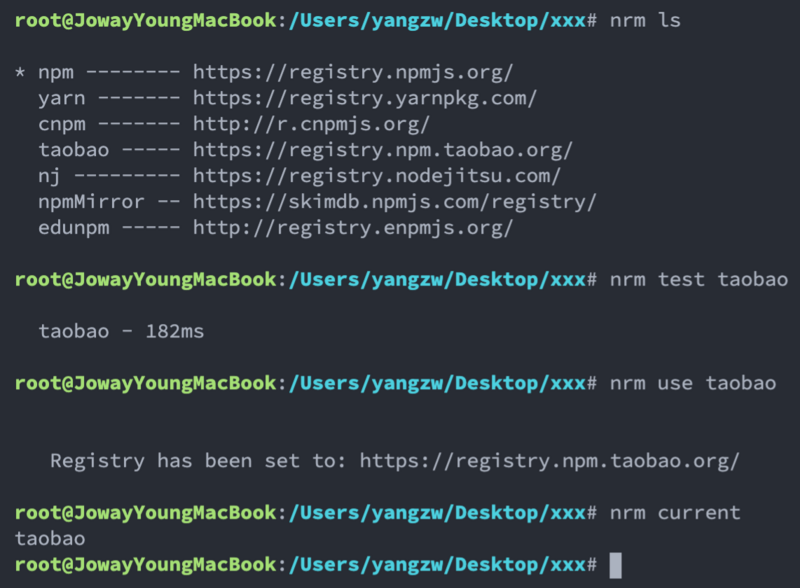聊聊debezium的BinlogReader

Reader
debezium-v1.1.1.Final/debezium-connector-mysql/src/main/java/io/debezium/connector/mysql/Reader.java
public interface Reader { public static enum State {
/**
* The reader is stopped and static.
*/
STOPPED,
/**
* The reader is running and generated records.
*/
RUNNING,
/**
* The reader has completed its work or been explicitly stopped, but not all of the generated records have been
* consumed via {@link Reader#poll() polling}.
*/
STOPPING;
}
public String name();
public State state();
public void uponCompletion(Runnable handler);
public default void initialize() {
// do nothing
}
public default void destroy() {
// do nothing
}
public void start();
public void stop();
public List<SourceRecord> poll() throws InterruptedException;
}
- Reader接口定义了name、state、uponCompletion、start、stop、poll方法
AbstractReader
debezium-v1.1.1.Final/debezium-connector-mysql/src/main/java/io/debezium/connector/mysql/AbstractReader.java
public abstract class AbstractReader implements Reader { protected final Logger logger = LoggerFactory.getLogger(getClass());
private final String name;
protected final MySqlTaskContext context;
protected final MySqlJdbcContext connectionContext;
private final BlockingQueue<SourceRecord> records;
private final AtomicBoolean running = new AtomicBoolean(false);
private final AtomicBoolean success = new AtomicBoolean(false);
private final AtomicReference<ConnectException> failure = new AtomicReference<>();
private ConnectException failureException;
private final int maxBatchSize;
private final Metronome metronome;
private final AtomicReference<Runnable> uponCompletion = new AtomicReference<>();
private final Duration pollInterval;
protected final ChangeEventQueueMetrics changeEventQueueMetrics;
private final HaltingPredicate acceptAndContinue;
public AbstractReader(String name, MySqlTaskContext context, HaltingPredicate acceptAndContinue) {
this.name = name;
this.context = context;
this.connectionContext = context.getConnectionContext();
this.records = new LinkedBlockingDeque<>(context.getConnectorConfig().getMaxQueueSize());
this.maxBatchSize = context.getConnectorConfig().getMaxBatchSize();
this.pollInterval = context.getConnectorConfig().getPollInterval();
this.metronome = Metronome.parker(pollInterval, Clock.SYSTEM);
this.acceptAndContinue = acceptAndContinue == null ? new AcceptAllPredicate() : acceptAndContinue;
this.changeEventQueueMetrics = new ChangeEventQueueMetrics() {
@Override
public int totalCapacity() {
return context.getConnectorConfig().getMaxQueueSize();
}
@Override
public int remainingCapacity() {
return records.remainingCapacity();
}
};
}
@Override
public String name() {
return name;
}
@Override
public void uponCompletion(Runnable handler) {
assert this.uponCompletion.get() == null;
this.uponCompletion.set(handler);
}
@Override
public final void initialize() {
doInitialize();
}
@Override
public final void destroy() {
doDestroy();
}
@Override
public void start() {
if (this.running.compareAndSet(false, true)) {
this.failure.set(null);
this.success.set(false);
doStart();
}
}
@Override
public void stop() {
try {
// Emptying the queue so to make sure that enqueue() won"t block indefinitely when adding records after
// poll() isn"t called anymore but before the binlog reader is stopped; note there"s still a tiny chance for
// this to happen if enough records are added again between here and the call to disconnect(); protecting
// against it seems not worth though it as shouldn"t happen for any practical queue size
List<SourceRecord> unsent = new ArrayList<>();
records.drainTo(unsent);
logger.info("Discarding {} unsent record(s) due to the connector shutting down", unsent.size());
doStop();
running.set(false);
}
finally {
if (failure.get() != null) {
// We had a failure and it was propagated via poll(), after which Kafka Connect will stop
// the connector, which will stop the task that will then stop this reader via this method.
// Since no more records will ever be polled again, we know we can clean up this reader"s resources...
doCleanup();
}
}
}
@Override
public State state() {
if (success.get() || failure.get() != null) {
// We"ve either completed successfully or have failed, but either way no more records will be returned ...
return State.STOPPED;
}
if (running.get()) {
return State.RUNNING;
}
// Otherwise, we"re in the process of stopping ...
return State.STOPPING;
}
@Override
public List<SourceRecord> poll() throws InterruptedException {
// Before we do anything else, determine if there was a failure and throw that exception ...
failureException = this.failure.get();
if (failureException != null) {
// In this case, we"ll throw the exception and the Kafka Connect worker or EmbeddedEngine
// will then explicitly stop the connector task. Most likely, however, the reader that threw
// the exception will have already stopped itself and will generate no additional records.
// Regardless, there may be records on the queue that will never be consumed.
throw failureException;
}
// this reader has been stopped before it reached the success or failed end state, so clean up and abort
if (!running.get()) {
cleanupResources();
throw new InterruptedException("Reader was stopped while polling");
}
logger.trace("Polling for next batch of records");
List<SourceRecord> batch = new ArrayList<>(maxBatchSize);
final Timer timeout = Threads.timer(Clock.SYSTEM, Temporals.max(pollInterval, ConfigurationDefaults.RETURN_CONTROL_INTERVAL));
while (running.get() && (records.drainTo(batch, maxBatchSize) == 0) && !success.get()) {
// No records are available even though the snapshot has not yet completed, so sleep for a bit ...
metronome.pause();
// Check for failure after waking up ...
failureException = this.failure.get();
if (failureException != null) {
throw failureException;
}
if (timeout.expired()) {
break;
}
}
if (batch.isEmpty() && success.get() && records.isEmpty()) {
// We found no records but the operation completed successfully, so we"re done
this.running.set(false);
cleanupResources();
return null;
}
pollComplete(batch);
logger.trace("Completed batch of {} records", batch.size());
return batch;
}
@Override
public String toString() {
return name;
}
//......
}
- AbstractReader声明实现了Reader接口,其poll方法主要执行records.drainTo(batch, maxBatchSize)及pollComplete
BinlogReader
debezium-v1.1.1.Final/debezium-connector-mysql/src/main/java/io/debezium/connector/mysql/BinlogReader.java
public class BinlogReader extends AbstractReader { private static final long INITIAL_POLL_PERIOD_IN_MILLIS = TimeUnit.SECONDS.toMillis(5);
private static final long MAX_POLL_PERIOD_IN_MILLIS = TimeUnit.HOURS.toMillis(1);
private final boolean recordSchemaChangesInSourceRecords;
private final RecordMakers recordMakers;
private final SourceInfo source;
private final EnumMap<EventType, BlockingConsumer<Event>> eventHandlers = new EnumMap<>(EventType.class);
private final BinaryLogClient client;
//......
public BinlogReader(String name, MySqlTaskContext context, HaltingPredicate acceptAndContinue, long serverId) {
super(name, context, acceptAndContinue);
connectionContext = context.getConnectionContext();
source = context.source();
recordMakers = context.makeRecord();
recordSchemaChangesInSourceRecords = context.includeSchemaChangeRecords();
clock = context.getClock();
eventDeserializationFailureHandlingMode = connectionContext.eventProcessingFailureHandlingMode();
inconsistentSchemaHandlingMode = connectionContext.inconsistentSchemaHandlingMode();
// Use exponential delay to log the progress frequently at first, but the quickly tapering off to once an hour...
pollOutputDelay = ElapsedTimeStrategy.exponential(clock, INITIAL_POLL_PERIOD_IN_MILLIS, MAX_POLL_PERIOD_IN_MILLIS);
// Set up the log reader ...
client = new BinaryLogClient(connectionContext.hostname(), connectionContext.port(), connectionContext.username(), connectionContext.password());
// BinaryLogClient will overwrite thread names later
client.setThreadFactory(Threads.threadFactory(MySqlConnector.class, context.getConnectorConfig().getLogicalName(), "binlog-client", false));
client.setServerId(serverId);
client.setSSLMode(sslModeFor(connectionContext.sslMode()));
if (connectionContext.sslModeEnabled()) {
SSLSocketFactory sslSocketFactory = getBinlogSslSocketFactory(connectionContext);
if (sslSocketFactory != null) {
client.setSslSocketFactory(sslSocketFactory);
}
}
client.setKeepAlive(context.config().getBoolean(MySqlConnectorConfig.KEEP_ALIVE));
final long keepAliveInterval = context.config().getLong(MySqlConnectorConfig.KEEP_ALIVE_INTERVAL_MS);
client.setKeepAliveInterval(keepAliveInterval);
// Considering heartbeatInterval should be less than keepAliveInterval, we use the heartbeatIntervalFactor
// multiply by keepAliveInterval and set the result value to heartbeatInterval.The default value of heartbeatIntervalFactor
// is 0.8, and we believe the left time (0.2 * keepAliveInterval) is enough to process the packet received from the MySQL server.
client.setHeartbeatInterval((long) (keepAliveInterval * heartbeatIntervalFactor));
client.registerEventListener(context.bufferSizeForBinlogReader() == 0
? this::handleEvent
: (new EventBuffer(context.bufferSizeForBinlogReader(), this))::add);
client.registerLifecycleListener(new ReaderThreadLifecycleListener());
if (logger.isDebugEnabled()) {
client.registerEventListener(this::logEvent);
}
//......
client.setEventDeserializer(eventDeserializer);
// Set up for JMX ...
metrics = new BinlogReaderMetrics(client, context, name, changeEventQueueMetrics);
heartbeat = Heartbeat.create(context.config(), context.topicSelector().getHeartbeatTopic(),
context.getConnectorConfig().getLogicalName());
}
@Override
protected void doStart() {
context.dbSchema().assureNonEmptySchema();
// Register our event handlers ...
eventHandlers.put(EventType.STOP, this::handleServerStop);
eventHandlers.put(EventType.HEARTBEAT, this::handleServerHeartbeat);
eventHandlers.put(EventType.INCIDENT, this::handleServerIncident);
eventHandlers.put(EventType.ROTATE, this::handleRotateLogsEvent);
eventHandlers.put(EventType.TABLE_MAP, this::handleUpdateTableMetadata);
eventHandlers.put(EventType.QUERY, this::handleQueryEvent);
eventHandlers.put(EventType.WRITE_ROWS, this::handleInsert);
eventHandlers.put(EventType.UPDATE_ROWS, this::handleUpdate);
eventHandlers.put(EventType.DELETE_ROWS, this::handleDelete);
eventHandlers.put(EventType.EXT_WRITE_ROWS, this::handleInsert);
eventHandlers.put(EventType.EXT_UPDATE_ROWS, this::handleUpdate);
eventHandlers.put(EventType.EXT_DELETE_ROWS, this::handleDelete);
eventHandlers.put(EventType.VIEW_CHANGE, this::viewChange);
eventHandlers.put(EventType.XA_PREPARE, this::prepareTransaction);
eventHandlers.put(EventType.XID, this::handleTransactionCompletion);
// Conditionally register ROWS_QUERY handler to parse SQL statements.
if (context.includeSqlQuery()) {
eventHandlers.put(EventType.ROWS_QUERY, this::handleRowsQuery);
}
final boolean isGtidModeEnabled = connectionContext.isGtidModeEnabled();
metrics.setIsGtidModeEnabled(isGtidModeEnabled);
// Get the current GtidSet from MySQL so we can get a filtered/merged GtidSet based off of the last Debezium checkpoint.
String availableServerGtidStr = connectionContext.knownGtidSet();
if (isGtidModeEnabled) {
// The server is using GTIDs, so enable the handler ...
eventHandlers.put(EventType.GTID, this::handleGtidEvent);
// Now look at the GTID set from the server and what we"ve previously seen ...
GtidSet availableServerGtidSet = new GtidSet(availableServerGtidStr);
// also take into account purged GTID logs
GtidSet purgedServerGtidSet = connectionContext.purgedGtidSet();
logger.info("GTID set purged on server: {}", purgedServerGtidSet);
GtidSet filteredGtidSet = context.filterGtidSet(availableServerGtidSet, purgedServerGtidSet);
if (filteredGtidSet != null) {
// We"ve seen at least some GTIDs, so start reading from the filtered GTID set ...
logger.info("Registering binlog reader with GTID set: {}", filteredGtidSet);
String filteredGtidSetStr = filteredGtidSet.toString();
client.setGtidSet(filteredGtidSetStr);
source.setCompletedGtidSet(filteredGtidSetStr);
gtidSet = new com.github.shyiko.mysql.binlog.GtidSet(filteredGtidSetStr);
}
else {
// We"ve not yet seen any GTIDs, so that means we have to start reading the binlog from the beginning ...
client.setBinlogFilename(source.binlogFilename());
client.setBinlogPosition(source.binlogPosition());
gtidSet = new com.github.shyiko.mysql.binlog.GtidSet("");
}
}
else {
// The server is not using GTIDs, so start reading the binlog based upon where we last left off ...
client.setBinlogFilename(source.binlogFilename());
client.setBinlogPosition(source.binlogPosition());
}
// We may be restarting in the middle of a transaction, so see how far into the transaction we have already processed...
initialEventsToSkip = source.eventsToSkipUponRestart();
// Set the starting row number, which is the next row number to be read ...
startingRowNumber = source.rowsToSkipUponRestart();
// Only when we reach the first BEGIN event will we start to skip events ...
skipEvent = false;
// Initial our poll output delay logic ...
pollOutputDelay.hasElapsed();
previousOutputMillis = clock.currentTimeInMillis();
// Start the log reader, which starts background threads ...
if (isRunning()) {
long timeout = context.getConnectorConfig().getConnectionTimeout().toMillis();
long started = context.getClock().currentTimeInMillis();
try {
logger.debug("Attempting to establish binlog reader connection with timeout of {} ms", timeout);
client.connect(timeout);
}
catch (TimeoutException e) {
// If the client thread is interrupted *before* the client could connect, the client throws a timeout exception
// The only way we can distinguish this is if we get the timeout exception before the specified timeout has
// elapsed, so we simply check this (within 10%) ...
long duration = context.getClock().currentTimeInMillis() - started;
if (duration > (0.9 * timeout)) {
double actualSeconds = TimeUnit.MILLISECONDS.toSeconds(duration);
throw new ConnectException("Timed out after " + actualSeconds + " seconds while waiting to connect to MySQL at " +
connectionContext.hostname() + ":" + connectionContext.port() + " with user "" + connectionContext.username() + """, e);
}
// Otherwise, we were told to shutdown, so we don"t care about the timeout exception
}
catch (AuthenticationException e) {
throw new ConnectException("Failed to authenticate to the MySQL database at " +
connectionContext.hostname() + ":" + connectionContext.port() + " with user "" + connectionContext.username() + """, e);
}
catch (Throwable e) {
throw new ConnectException("Unable to connect to the MySQL database at " +
connectionContext.hostname() + ":" + connectionContext.port() + " with user "" + connectionContext.username() + "": " + e.getMessage(), e);
}
}
}
@Override
protected void doStop() {
try {
if (client.isConnected()) {
logger.debug("Stopping binlog reader "{}", last recorded offset: {}", this.name(), lastOffset);
client.disconnect();
}
cleanupResources();
}
catch (IOException e) {
logger.error("Unexpected error when disconnecting from the MySQL binary log reader "{}"", this.name(), e);
}
}
@Override
protected void pollComplete(List<SourceRecord> batch) {
// Record a bit about this batch ...
int batchSize = batch.size();
recordCounter += batchSize;
totalRecordCounter.addAndGet(batchSize);
if (batchSize > 0) {
SourceRecord lastRecord = batch.get(batchSize - 1);
lastOffset = lastRecord.sourceOffset();
if (pollOutputDelay.hasElapsed()) {
// We want to record the status ...
long millisSinceLastOutput = clock.currentTimeInMillis() - previousOutputMillis;
try {
if (logger.isInfoEnabled()) {
context.temporaryLoggingContext("binlog", () -> {
logger.info("{} records sent during previous {}, last recorded offset: {}",
recordCounter, Strings.duration(millisSinceLastOutput), lastOffset);
});
}
}
finally {
recordCounter = 0;
previousOutputMillis += millisSinceLastOutput;
}
}
}
}
//......
}
- BinlogReader继承了AbstractReader,其构造器创建了BinaryLogClient并设置了registerEventListener(
handleEvent)及eventDeserializer;其doStart方法初始化eventHandlers,然后设置gtidSet或者binlogFilename及binlogPosition,然后执行client.connect(timeout);其doStop方法执行client.disconnect();其pollComplete方法主要更新recordCounter及totalRecordCounter等metrics
小结
BinlogReader继承了AbstractReader,其构造器创建了BinaryLogClient并设置了registerEventListener(handleEvent)及eventDeserializer;其doStart方法初始化eventHandlers,然后设置gtidSet或者binlogFilename及binlogPosition,然后执行client.connect(timeout);其doStop方法执行client.disconnect();其pollComplete方法主要更新recordCounter及totalRecordCounter等metrics
doc
- BinlogReader
以上是 聊聊debezium的BinlogReader 的全部内容, 来源链接: utcz.com/z/516565.html







